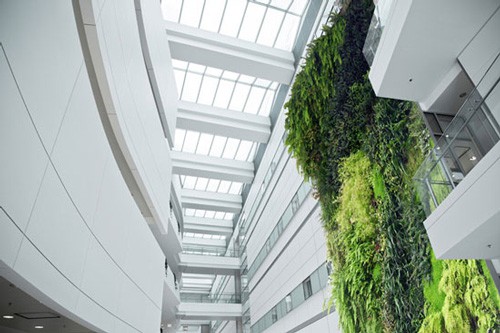 A growing number of interior design studies have proven the positive of indoor greenery on productivity, health and well-being, with the incorporation of plant life long included in the designs of both commercial and educational facilities.
A growing number of interior design studies have proven the positive of indoor greenery on productivity, health and well-being, with the incorporation of plant life long included in the designs of both commercial and educational facilities.
Now, the incorporation of interior greenery has grown to such an extent that these additions have begun taking up large portions of interior wall spaces.
A new trend sees ‘bio-walls’ bringing new life into conventional spaces. According to former University of Guelph researcher Dr. Alan Darlington, the incorporation of these green walls are drastically increasingly Indoor Environmental Quality (IEQ) passively, without energy reliance.
“We’re getting rid of 60 to 70 per cent of the pollutants in the air after a single pass through the filtration system,” he said. “It means less fresh outdoor air has to be brought in to maintain air quality and that significantly reduces the energy required to heat or cool that air. It’s a really beautiful technology.”
Bio-walls are on full display in the LEED platinum certified Algonquin Centre for Construction Excellence. Labelled as one of the most cutting-edge green learning institutes in the country, the development features a five-storey green wall that allows interior air to be filtered organically while offering students a hands-on green building learning model.

The realities of IEQ and the detriments of inhabiting a space that has a poor rating are fast becoming one of the greatest catalysts for retrofitting or building green spaces. Furthermore, Darlington explains, the beauty of these features is in their low maintenance nature, which makes the incorporation of bio-walls a commercially viable concept.
“The amazing thing about nature is that it has this unique ability to repair itself,” says Darlington.
The positive aspects of interior greenery have long been proven. Like the products themselves, this trend is expected to continue growing both in Canada and internationally, bringing with it reduced energy use and a higher standard of living.
This article is by Angela Fedele and appeared on sourceable.net on 2nd June 2013.
